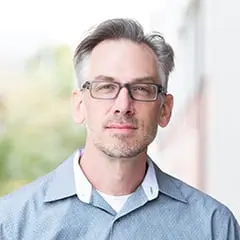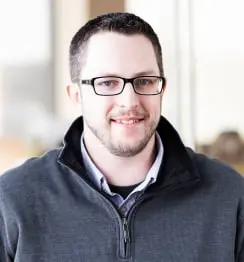 | 1.5 LU / HSW |
 | 1.5 LU / HSW |
Imagine growing up in a place that historically has been devoid of hope. A place that not only requires a sense of resiliency, but demands it in order to survive. A place where the school is literally the heartbeat of the community. Umóⁿhoⁿ (Omaha) Nation Public Schools recently planned and built a catalyst career & technical education center that not only provides opportunities for students but also creates a response to real needs for the Omaha Nation Reservation Community. In this session, we will explore how the issues faced by reservation and other remote communities can create real opportunities for school programming to create career tracks, services and amenities which then truly builds community resiliency by creating needed services and resources. The session will illustrate how embracing traditions and culture, often seen as obstacles, actually helps to foster hope and change. Learn how to include local tradecraft and community resources in an integrated approach to education. We will explore how the school administration redefined success for the modern native student through examining past data and facilitating new behaviour reinforcement through implementation science. The Umóⁿhoⁿ Against the Current Career Center facilitates daily needs and provides community resource spaces far beyond norms. We will explore how the facility faced challenges of working with a high risk population, culturally-based large scale outdoor education and curating tribal community and school activities in remote and rural settings. The success is astonishing, with graduation rates that not long ago were far below the norm now exceeding the state average. The future is so bright you will also be wearing shades!
Learning Objectives:

Cleve leads BVH’s future-focused learning space design initiatives, shaping BVH’s practice to deeper levels of achievement. Growing up in a family of educators and having spent his career on educational projects and initiatives, his depth goes beyond planning, design, and construction to include broader expertise and bring unique insight to clients. His skills in formulating client-centered concepts and ideas help bring teams and communities together in a collaborative process.

Stacie started her career as a School Psychologist, then served as the Special Education Director, and Middle School Principal before becoming Superintendent. Under her leadership, UNPS has revised its instructional model, implemented new curriculum and now offers top-notch professional development and coaching. Stacie’s work in advocacy and equity is recognized at the state-level and she has become a leader in National Indian Education.

Kari is a School Psychologist and Educator with 25 years of experience. She is a trainer of safety care, restorative practices and conflict mediation. She oversees programming and operations of behavioral programming and mental health support. In addition, she provides grief/crisis counseling to students and oversees a number of other grants and programs directly related to her specializations.

Matt is a licensed architect who specializes in education projects throughout the Midwest region, many in rural environments. He is a seasoned veteran in the planning, design, and management of the architectural process, having 15 years of experience in the profession. When Matt isn't designing creative learning environments, you will likely find him and his wife on the soccer field with their two kids.
This track focuses on Resiliency and addresses how learning environments support the development of students and communities that have the strength and flexibility to withstand adversity and adapt to change. The COVID-19 pandemic demonstrated the essential role that schools have in stabilizing communities during a time of crisis. How do schools support the development of strong community culture among teachers and students? How do schools foster physical and mental health and wellness to ensure all are ready and supported to learn? How do we create learning environments that are strong in intent yet adaptable to change? How do we learn from what does not work and further, learn to take risks daily to expand our comfort zone? What can we learn from research and our responses to past events to inform how to build toward a resilient future where we can withstand what crises and challenges the future brings? Topic areas, seen through the lenses of both Art and Science, include sustainability, physical and mental health, community, school climate and culture, safety, and security.
Primary Core Competency
Educational Visioning: Exhibits an understanding of best and next practices related to educational leadership, programming, teaching, learning, planning and facility design. Establishes credibility with educators, community members and design professionals while conceiving and leading a community-based visioning process. Demonstrates the ability to articulate the impact of learning environments on teaching and learning and uses that ability to facilitate a dialogue that uncovers the unique needs and long-range goals of an educational institution and its stakeholders – translating that into an actionable written/graphic program of requirements for the design practitioner.